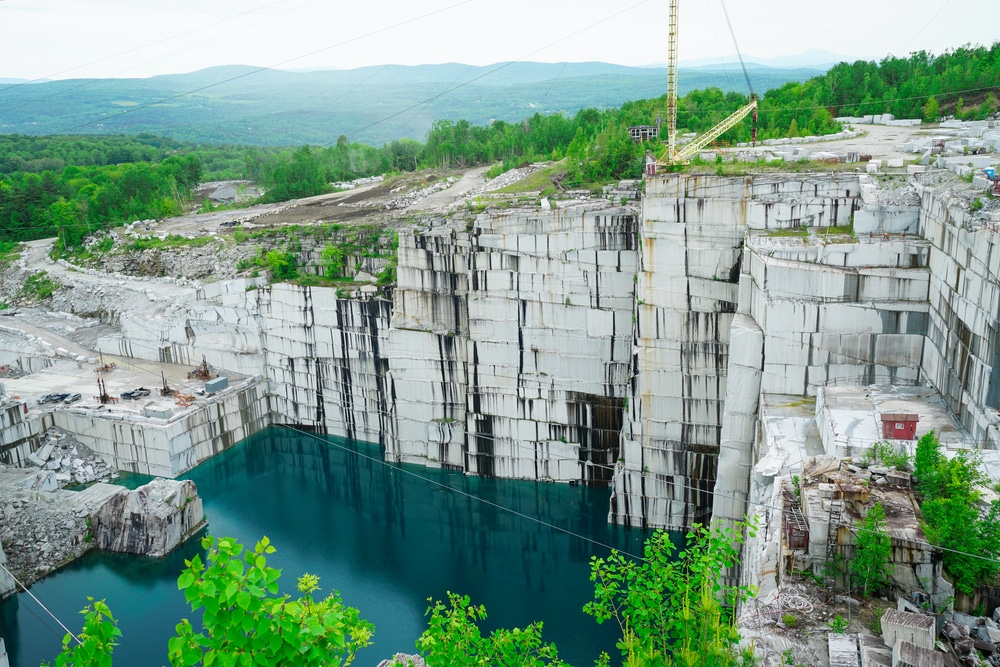The Covert Treasures: Discovering Granite Quarries in South Africa
The Covert Treasures: Discovering Granite Quarries in South Africa
Blog Article
Discovering the Rich Background and Lasting Practices of Granite Quarrying
As we base on the precipice of discovering the intricate tapestry of granite quarrying, a trip through time reveals not just the physical act of removing stone however also the cultural and historical value woven into the very fabric of this practice. From the ancient origins that laid the structure for contemporary quarrying strategies to the sustainable practices that are forming the future of this market, each carve mark on granite surfaces narrates waiting to be uncovered (granite quarries in south africa). The legacy of granite quarrying stretches much beyond simple removal; it is a testimony to human ingenuity, strength, and the enduring allure of this stunning rock
Ancient Origins of Granite Quarrying
Going back to ancient people, the technique of quarrying granite has actually been an integral part of human history and architectural advancement. The earliest evidence of granite quarrying go back to old Egypt, where massive pyramids and complex sculptures were crafted from this resilient stone. The Egyptians made use of primitive tools to remove granite blocks from quarries, showcasing the value of this material in their significant constructions.
Moving forward in history, the Greeks also made significant contributions to the quarrying of granite. The Greeks made use of granite in different building wonders, such as temples and statuaries, showing their ability in shaping and sculpting this hardy rock. The Romans even more refined the strategies of quarrying granite, employing advanced devices like chisels and hammers to essence and shape granite for their renowned frameworks.
Through the centuries, the practice of quarrying granite has actually progressed, with contemporary technologies boosting performance while preserving the classic charm of this all-natural rock - granite quarries in south africa. From ancient civilizations to modern building contractors, the heritage of granite quarrying remains to form our world
Advancement of Quarrying Strategies
The evolution of quarrying techniques has actually been marked by a constant progression towards better efficiency and accuracy in drawing out granite. From the simple methods utilized by our forefathers to the advanced innovations utilized in contemporary quarrying operations, the industry has actually gone through considerable innovations. Early quarrying techniques included manual work with fundamental devices such as knives, hammers, and wedges to draw out granite blocks from the planet. As civilizations progressed, methods like fire-setting and primitive nitroglycerins were presented to assist in the removal process.
Advancements in computer-controlled devices and 3D modeling have actually enhanced quarrying operations, leading to minimal ecological impact and boosted sustainability methods. As the demand for granite proceeds to rise, the evolution of quarrying methods stays integral to meeting market requires efficiently and sustainably.
Social Value of Granite
Granite holds an extensive social importance across different human beings because of its enduring existence in building masterpieces and respected monoliths. From the magnificent pyramids of Egypt to the elaborate makings of the Angkor Wat temple in Cambodia, granite has actually been a product of selection for expressing grandeur and long life in cultural heritage. In ancient Rome, granite columns adorned holy places and public structures, signifying toughness and permanence. The cultural relevance of granite expands beyond its physical characteristics; it embodies resilience, stability, and timelessness, making it a sign of sustaining legacies and customs.

Sustainable Practices in Quarrying
Among the abundant history of granite quarrying and its cultural significance exists an expanding focus on sustainable techniques within the market. As environmental understanding and concerns regarding source deficiency have actually increased globally, the quarrying sector has significantly welcomed lasting methods to lessen its effect on the atmosphere and bordering areas.

Additionally, recovery and recovery of quarry websites post-extraction are indispensable to sustainable techniques. By recovering quarried locations to an all-natural or advantageous state, such as producing wildlife habitats or leisure spaces, quarriers can offset the environmental impact of their operations and add favorably to the local environment.
Heritage of Granite Quarrying
With a historic backdrop steeped in workmanship and commercial progression, what enduring effect has granite quarrying left on the landscape of modern-day society? The heritage of granite quarrying goes beyond plain extraction methods; it has actually formed architectural wonders, urban landscapes, and cultural heritage worldwide. The resilient nature of granite has made it a recommended selection for monuments, buildings, and facilities, standing as a testimony to the ability and artistry of quarry employees throughout generations.
Additionally, the financial impact of granite quarrying can not be neglected. The industry proceeds to supply work chances and drive neighborhood economic situations in regions where granite removal prevails. It has additionally stimulated technological improvements in quarrying methods and devices, causing much more efficient and sustainable methods.
In terms of sustainability, the heritage of granite quarrying includes efforts to reduce ecological impacts via reclamation projects and responsible resource useful site management. By balancing financial rate of interests with ecological stewardship, the market aims to click resources make certain that future generations can continue to gain from this enduring natural source.
Conclusion

Report this page